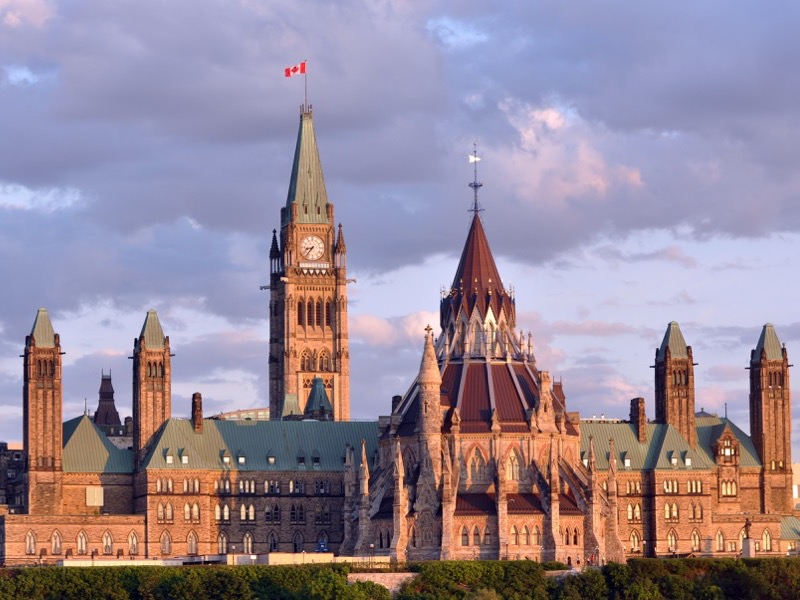
The recent confusion over bare trusts is the most recent example of the unnecessary complexity of the Canadian tax system, experts say.
Guidance from the Canada Revenue Agency (CRA) has been insufficient, said John Oakey, vice-president of taxation at CPA Canada. That’s left accountants, lawyers and financial advisors hoping their interpretation matches the government’s. “Uncertainty is not good,” he said.
And because no one has filed a return for a bare trust before this year, few know what qualifies as one.
“If I say we’re at a party and I ask you to hold my beer for me, that’s a bare trust,” Oakey joked. (A bare trust is when one person holds the title of something for another person with no beneficial ownership.)
The bare trust uncertainty is just one of many issues that make the Canadian tax system difficult to grasp.
“It’s easy to get a consensus around the need for tax reform. It’s very difficult to get a consensus around what the reformed tax system should look like,” said Fred O’Riordan, EY Canada’s national leader for tax policy.
Since Canada’s last tax reform was enacted in 1972, tax professionals have found ways around each update to the Income Tax Act. Then, amendments intended to close those loopholes further increase the tax system’s complexity, O’Riordan said.
“There’s so much complexity in the [tax] system that even professionals are more than likely making mistakes,” Oakey said.
That creates challenges for the average taxpayer. To build a more equitable system, experts say the system needs more simplicity — and the government should reconsider whether the CRA is best positioned to distribute benefits to vulnerable Canadians.
The CRA used to just be a tax enforcement and collection agency, but its role now includes wealth redistribution as the government relies on the agency to distribute benefit programs, Oakey said. The CRA has grown from 42,000 employees in 2016 to nearly 60,000 in 2024.
“I was alive when you got family allowance checks and they … had nothing to do with the income tax system,“ said Kim Moody, founder of Calgary-based tax firm Moodys Private Client. “But they abandoned that and they put it right into the tax system.”
Many vulnerable Canadians miss out on benefits because they are either too intimidated to file taxes or can’t afford to pay for professional tax preparation, Moody said. “The average person right now can’t approach a person like me. I’m too expensive, and that’s not right. In a perfect world, I wouldn’t have a job.”
Even if Canadians file for benefits, they might not get it right. A taxpayer may risk reassessment if they misunderstand a rule, file incorrectly or claim a benefit they didn’t qualify for, Oakey said. The CRA is trying to claw back billions that were distributed to people who were ineligible for pandemic-related benefits, for example.
The consequences of filing an incorrect return could include interest on penalties and even imprisonment, said Philip Lawrence, Conservative MP and associate shadow minister for finance and middle class prosperity for tax reform.
Filing for benefits is even more complicated for couples, who face a blended system where each person files individually but benefits are allocated as a family with inconsistent rules, Oakey said. For example, while couples can choose which spouse claims the medical expense tax credit, the childcare credit must be allocated to the lower-income spouse.
“You either go all the way [for individual filing or] make it a family taxation unit,” Oakey said. “We’re in a much more complicated situation by trying to blend the two of them.”
At the opposite end of the spectrum, high marginal tax rates are disincentivizing productivity. The highest marginal federal/provincial tax rate is more than 50% in all but two provinces.
Shifting government revenue from income taxes to consumption taxes like the GST could help boost productivity, especially as mechanisms such as the GST/HST credit exist to refund a portion of consumption tax to lower-income taxpayers, Moody said.
Lower marginal tax rates also could entice high income earners to stay in Canada rather than relocate to lower-tax jurisdictions, Oakey said.
Jurisdictional concerns also affect tax reform, as consultation with provinces is another complicating factor. Many provincial tax acts make references to the federal income tax act, Oakey said. For example, Ontario’s Income Tax Act makes more than 300 references to its federal counterpart.
“You will either want to get the provinces to agree with what you’re doing, or you just go alone and then leave the provinces to make whatever corrections they want,” Oakey said.
But changes don’t need to be made in one fell swoop. While O’Riordan said a clean slate approach would be best as incremental improvements will add complexity, Lawrence said some areas can be addressed sooner.
Lawrence believes all 338 MPs are likely to support the idea of tax reform, but urged caution in making big changes. “The Income Tax Act is thousands of pages deep, so that there are many opportunities to go wrong in tax reform as well,” he said.